Types ergonomics of hairdressing scissors
ROO Professional hairdressing scissors are represented by a variety of models, the difference of which is not only in purpose, but also in shape. Their shape is fundamental for choosing one or another model of scissors. This is not just a fashionable or classic design; this is a serious calculation designed for the convenience of the master and ease of work.
What is "ergonomics" in hairdressing scissors?
In a general sense and in quite simple words "ergonomics" — this is the part of the design that is responsible for how convenient it is to use items. In professional scissors for cutting hair, the concept of "ergonomics" most often used in relation to the location of the rings and the length of the handles of the scissors. Since it depends on them how the master will position the shoulder and forearm during the haircut.
What are the types of scissors ergonomics?
To make the tool more convenient, each manufacturer strives to bring something new to the design: embossed handles with recesses for fingers; handles with special levers; movable fastening of rings, movable inserts, and the like. All this certainly affects the usability of scissors in work. However, this article will focus on the accepted classification of hairdressing scissors.
For a complete understanding, you need to draw an imaginary line that will pass through the end of the closed blades and the helical group of your scissors. Thus, 3 main types of ergonomics of hairdressing scissors for cutting can be distinguished:
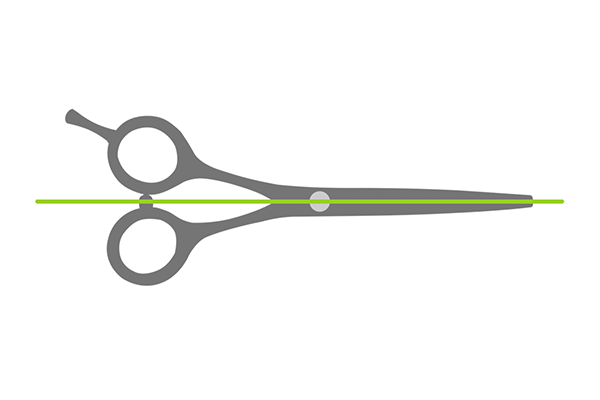
► "classic design" or "classic" — is the simplest scissors, where the top and bottom half of the scissors are completely symmetrical. The handles of the scissors are of the same length, and the rings are opposite each other. In such scissors, an imaginary line will pass exactly in the middle of the scissors.
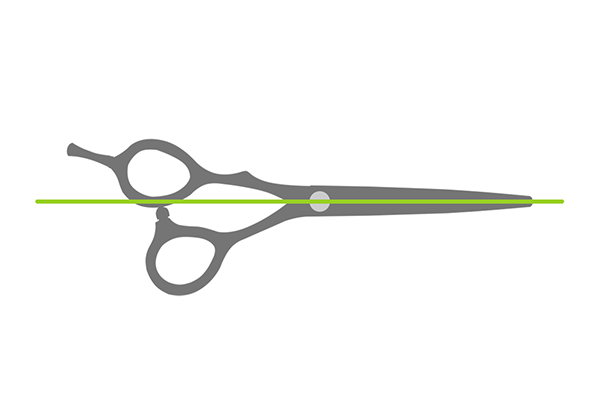
► "semi-offset design" or "semi-ergonomic" — less symmetrical scissors. In these, the handle of the thumb ring is shorter than the handle of the ring finger ring. As a result, the rings are not arranged symmetrically, but as if slightly shifted relative to each other, which is clearly visible along the line.
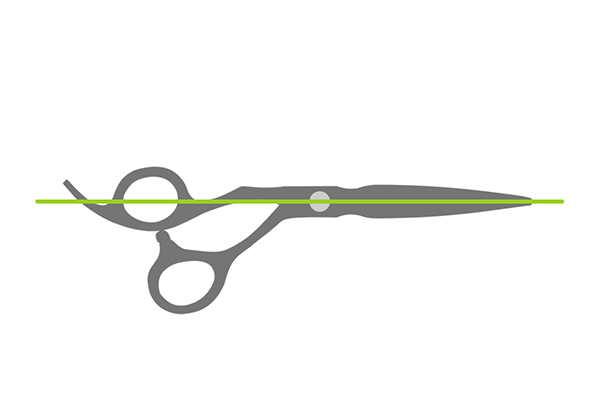
► "offset design" or "full ergonomic" — they not only have handles of different lengths, as in ergonomic, but also have different angles of contact with the scissor blades. It turns out that the upper ring for the ring finger will be located on the symmetry line, and the ring for the thumb will be strongly shifted down.
What does the different shape of the scissors affect?
We figured out how to distinguish between the different ergonomics of professional clippers. But what influences the ergonomics of scissors?! If very briefly, different lengths, the location of the handles and rings of the scissors affect the position of the master's hand, the load on the muscles and joints during work. Next for each species.
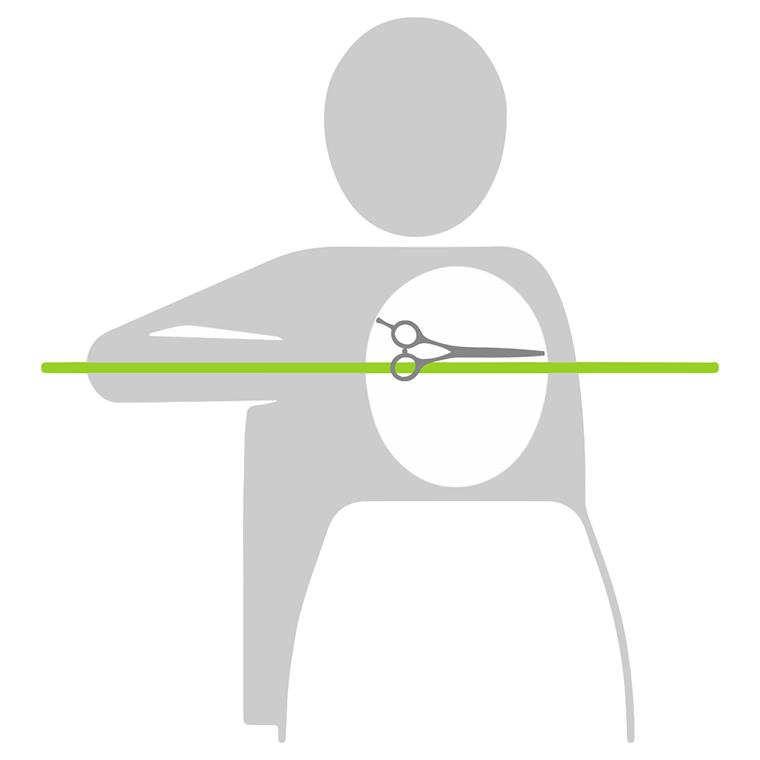
► classic symmetrical scissors — when making a straight cut, requires the master to hold forearm parallel to the ground. This creates a certain amount of tension in the arm as the shoulder needs to be pulled away.
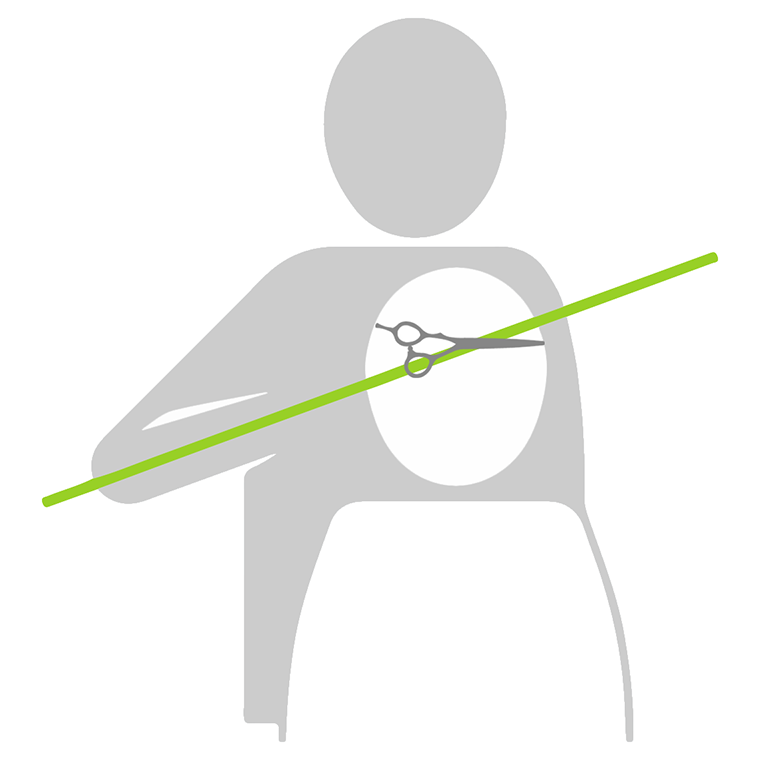
► semi-ergonomic — with the same straight cut, due to the displacement of the rings, they allow you to hold the forearm no longer horizontally, but at an angle of about 45°, which allows slightly lower the shoulder and unload the shoulder joint.
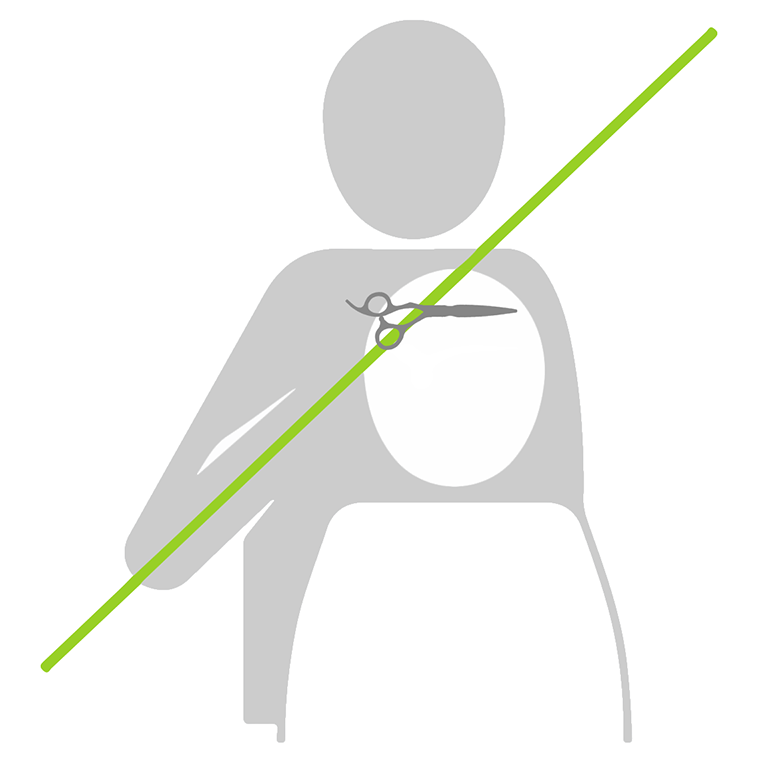
► ergonomic — due to the strong displacement of the rings, they allow the forearm to be lowered. This means that the shoulder and shoulder joint will be completely relaxed during work.
What are the different types of scissors made for?
You can leave one form of ergonomic scissors and stop there, but here you should consider the nuances in learning, personal preferences, and habits.
Convenience is extremely tricky thing and depends on many physiological characteristics of the body - what is convenient for one person may be uncomfortable for another. Different hand structure, different muscle strength. All this affects which scissors will suit each person.
In addition, there is a moment of different training programs. In some hairdressing schools, teachers recommend taking only classic symmetrical scissors to start with, to get used to the correct position of the scissors during a haircut. And then, the student can already choose the most convenient scissors.
As you can see, there is a demand for all types of scissors, and ROO Professional tries to satisfy all the wishes and requests of both novice hairdressers and experienced professionals with many years of experience.
What types of ergonomics does ROO Professional offer?
There are 3 main types of ergonomics in the ROO Professional cutting scissors range:
► classic;
► semi-ergonomic;
► ergonomic;
Each specialist will be able to choose ROO Professional scissors according to their personal preferences. However, whatever model you choose — it will be a quality choice for a reasonable price.